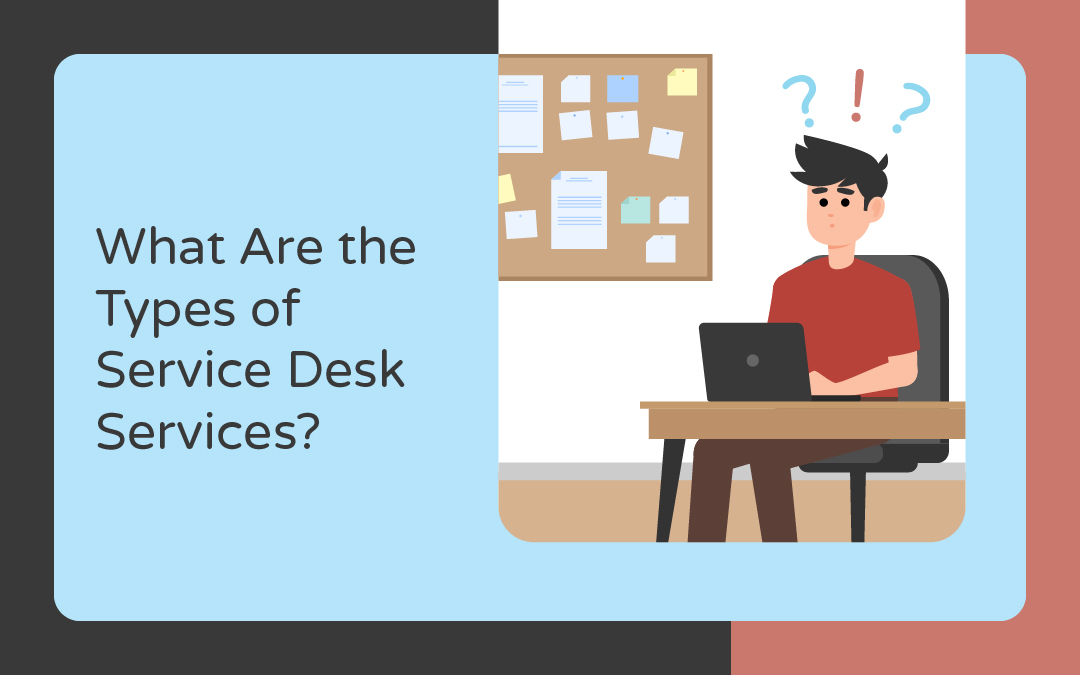Implementing a service desk has very real benefits for businesses both large and small. How it achieves these benefits is all to do with the specific service tools that are included in good service desk software. So, to understand how your business may become more productive, you should look at the different types of service desk services. This will help you to utilise and optimise the capability of those services.
What is a service desk?
The purpose of a service desk is to serve users, customers or clients. Within a business, the service desk is the main point of contact between the service provider and these users. Its key priority is to meet product, support and development targets set by the business. A service desk may include elements of a help desk, which is there to respond to immediate issues and problems. Its remit, however, is broader, with a focus on the quality of response. Indeed, the service desk must meet the core needs of the business. For this reason, service desk tools enable strategic planning and process change that will benefit overall business performance.
Customer Satisfaction
Most tools within a service desk are there to facilitate customer satisfaction. This is an extremely wide remit, so we’ve identified the core services within this requirement.
Incidents
This is a key feature of the help/service desk. It facilitates communication and tracking of incidents or problems through the organisation. Service desk software should direct incident requests to the correct team, and prioritise and manage that workflow in a proactive way.
Customer Service Management
Central to the success of a service desk is customer service management functionality. The business is the customer which should be provided with effective service to an agreed standard. This is the part of a service desk where Service Level Agreements (SLAs) and Key Performance Indicators (KPIs) are set and monitored. Quality and continuity of service and performance for the customer or user are in this way highlighted. So, your service desk-produced SLAs allow your technology and business to meet priorities with more clarity.
Prioritisation
In this way, these performance indicators are central in prioritising incidents and continually assessing how the business is performing from a customer satisfaction perspective. Service desk tools should enable managers to set SLAs that are relevant to their teams, rather than being based on arbitrary data. Similarly, KPIs facilitate organisations to assess their customer service management progress in terms of real business objectives. From a service desk perspective, these factors should offer constructive data that enables teams to build strategic goals.
Communication
Good communication across an organisation is recognised as contributing to productive working and customer satisfaction. Within a service desk, alert and feedback services are crucial in supporting good communication and strategic change. Both cross-team and in-team communication rely on this part of the tool, and so your service desk feedback features should be responsive and intuitive.
Reporting
Your service desk should utilise tools that produce informative reports in a breadth of areas. This enables the business to consistently re-evaluate and assess performance and customer satisfaction. Through regular reporting, managers can identify where problems may be recurring. These could be signs of more core issues, so reporting can actually prevent damaging and costly flaws within systems. Target your reporting tools proactively to your industry or organisation to support benchmarking. Interestingly, this is not just about retrospective assessment. Advanced reporting allows teams to think forward in structure and workflow.
Self-service
On the flip side of directly serving a customer or user, a service desk should empower users and customers to self-serve. This streamlines processes and supports customer satisfaction.
Portals
This aspect of service makes your support processes more streamlined. It does this by facilitating communication in an intuitive way. Work towards empowerment and autonomy within your workforce through self-service portals. This function maintains a flow of activity to help better manage your business. Users should not have to rely on physical presence to facilitate their own activity. In this way, portals can be used to share information and updates or tracking on incidents. Service desk portals can serve internal or external users with the information that they need when they need it. Indeed, portal technology is revolutionising how users and customers interact with or within a business.
Knowledge Management
A key way that portals are great practice within your service desk is how they enable users to access knowledge with greater clarity. Integrated features such as FAQ management and document libraries optimise the self-service offering. It’s clear that knowledge management benefits users who have information at their fingertips. However, this service also benefits departments whose specialist knowledge and expertise can be shared through portals.
Change Management
Services that support knowledge management are vital in a good service desk. This is the core of good communication since well-ordered information means that knowledge can be easily shared and utilised.
Process Change
These service tools manage the more strategic change that is set by the business. In this way, your service desk can manage planning, tasks, workflow and budgets. Process change may be to do with organisation growth. Or perhaps a business challenge requires process change to be made. Whatever the circumstance, it’s vital to manage change proactively. With the assistance of service desk tools and strategic planning, you can constructively plan technical and process changes which support and elevate the business. This facilitates organisation growth without the costly structural chaos that reactive growth can cause.
Asset Management
Whether an organisation is large or small, keeping track of assets can easily fall behind. From licensing to hardware, maintenance is vital to avoid unnecessary costs and breakdowns. Integrating management of assets within a service desk capability is both constructive and cost-saving.
Conclusion
Where your service desk is there to support and serve the business, the tools within that service desk are there to serve the teams to work productively. Make the best use of your service desk by getting in touch with us!
